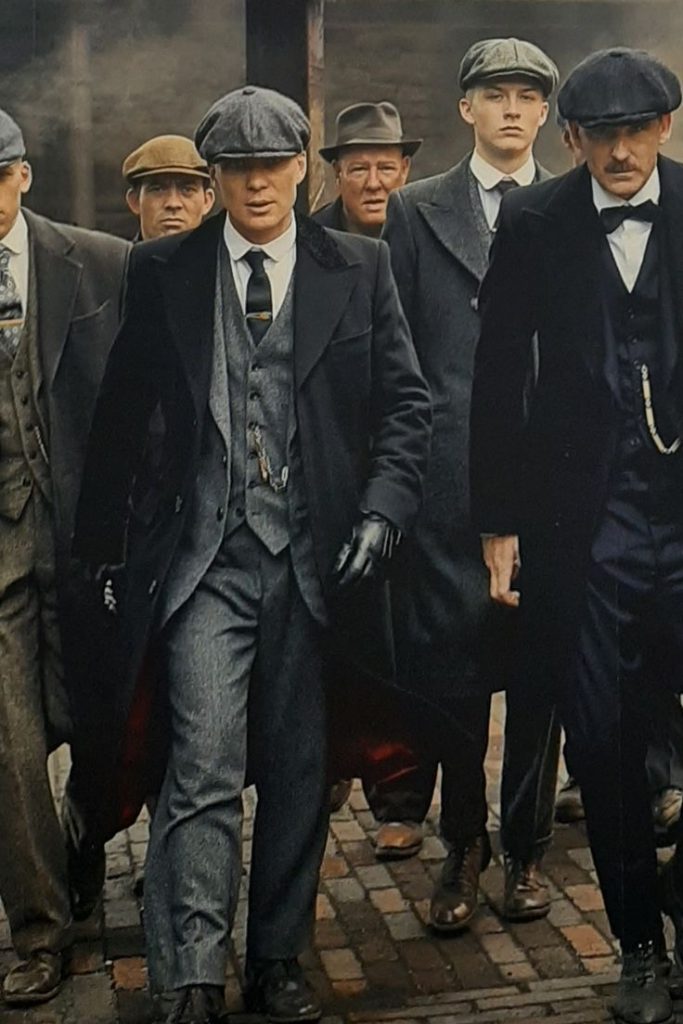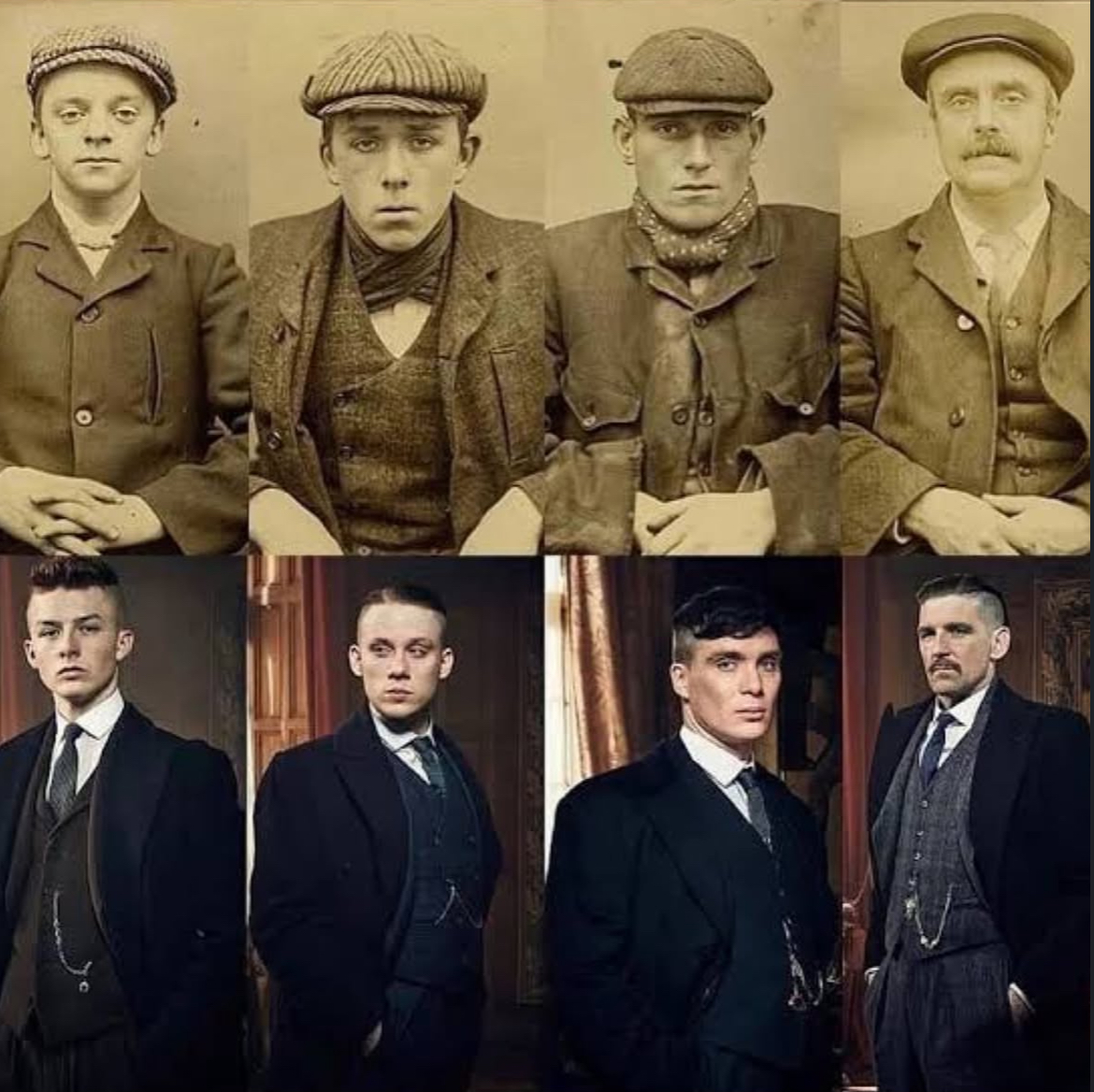Long before they became global TV icons, the real Peaky Blinders roamed the gritty streets of Birmingham in the late 19th century, forging a fearsome reputation not through organized crime empires, but through street brawls, illegal betting, and defiant style.
Emerging from the impoverished neighborhoods of Birmingham around the 1880s, the original Peaky Blinders were a loosely connected group of young men involved in petty crime and violence. Far removed from the complex criminal dynasties portrayed in the hit television series, these gangs operated in smaller, independent clusters, often clashing with rival groups and occasionally with police forces attempting to maintain order.
What set them apart beyond their criminal activity was their unmistakable sense of style. Dressed in tailored jackets, bell-bottom trousers, and silk scarves, their most iconic accessory was the flat cap, rumored to be embedded with razor blades. Though historians dispute the practicality of such a weapon, the legend added a layer of menace to their image.
“The Peaky Blinders weren’t kingpins, they were young men trying to stand out and survive in a harsh world,” said Dr. Eleanor Shaw, a historian specializing in urban crime in Victorian Britain. “Their fashion was a form of rebellion, a way of claiming identity and power in a society that gave them very little.”
Over time, their influence waned as more structured and organized criminal enterprises took root in Birmingham and beyond. By the early 20th century, the original Peaky Blinders had largely faded into obscurity until popular culture revived them a century later.
The BBC television series Peaky Blinders, created by Steven Knight and first premiered in 2013, brought this historical footnote to global prominence. The show, starring Cillian Murphy as the fictional gang leader Tommy Shelby, captivated audiences with its cinematic storytelling, intense character development, and anachronistic yet compelling soundtrack.

While the series takes significant creative liberties with historical accuracy—setting the story in the post-World War I era (1920s and 1930s) rather than the real gang’s peak in the 1890s, and depicting a highly organized criminal empire that did not exist in reality—it successfully captured the gritty atmosphere of post-war Birmingham.
The show’s popularity surged throughout its six seasons, culminating in 2022, and it has garnered critical acclaim, including BAFTA awards. Its cultural impact extends beyond viewership, influencing fashion trends with its distinctive early 20th-century style and sparking discussions about class, power, and the effects of war. The show has been streamed globally, with one analysis naming it the most widely streamed European original series of 2022, demonstrating its immense international appeal.
Today, the myth of the Peaky Blinders lives on, amplified by fiction but rooted in real history. While the television show paints them as masterminds of organized crime, the truth reveals a rougher, more fragmented reality; a group of working-class youth who left a mark on their city not just through violence, but through unforgettable style.





